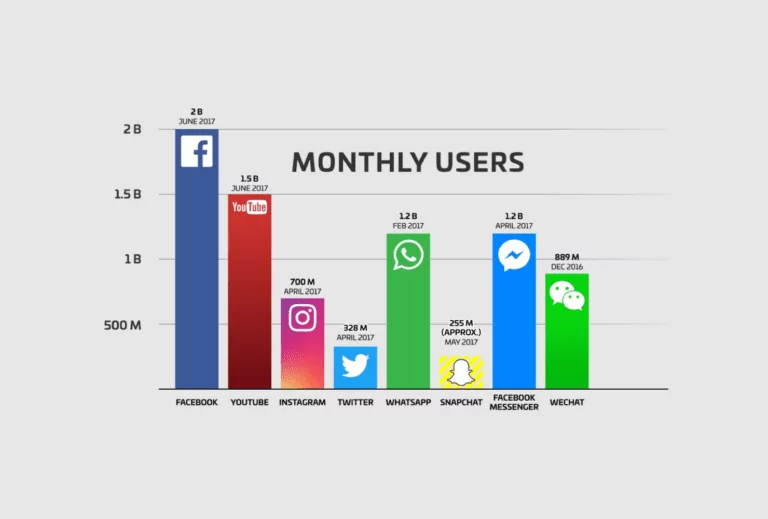How to Create a Social Media Strategy that Will Bring Results?
1. Set the Right Goals
Having different platforms at your disposal and recklessly posting does not equate to social media marketing success. If you’re new to the territory of social media marketing, you might consider using the mnemonic acronym S.M.A.R.T. Developed by Peter Drucker and G.T.Doran; this framework helps organizations and individuals set objectives in an effective and productive manner.
- Specific –target a specific area for improvement
- Measurable – quantify and stipulate an indicator of progress
- Achievable– ensure goals are achievable given available resources
- Realistic – design objectives that are challenging but reachable
- Time-Related– have a deadline by which results need to be achieved.
When a social media marketing strategy bombs, it’s usually due to a lack of consensus on the definition of success, coupled with vague social media platform strategy goals. On a macro level, we might conclude the ultimate goal of social media marketing is to boost revenue. Yet on a micro level, each campaign will have different objectives, like promoting a new product, getting new email subscribers, or driving them to your website. Your overall social media strategy can have S.M.A.R.T. goals, as can each campaign.
For instance, declaring you want to make the most sales next year doesn’t mean much, unless it’s quantifiable. Think about it; your company could make one more sale more in 2022 than you did in 2021, and technically, you would have achieved your objective, even though you were probably referring to a substantial jump in profit. And this is why setting the right; measurable goals are the first step towards measuring and achieving social media success.
2. Research Your Target Audience

To quote social media management tool Hootsuite: “Your task in defining your social media audience is to identify and understand your niche, so you can dominate it.” Through audience research, you can develop a relevant social media content strategy that leads to a higher conversion rate and better ROI. Even if you possess a firm grasp of your target audience, you can’t assume your overall customer demographics will match your target audience on social media sites.
Knowing how your audience helps to streamline social media marketing efforts. For instance, if you’re a beauty brand and know your target audience are professional career women, you might share content on beauty regimes that emphasize self-care. However, if your beauty brand appeals to active sportsmen, you might share content on quick and easy skincare tips.
Moreover, you’ll want to figure out what platforms your audience uses, too. Not every brand has to be on every social media platform. It is truly about meeting existing and potential customers where they already are. For example, if your target market spends time scrolling through social media posts on Instagram, you’ll want to focus your social media marketing plan on this platform.
3. Select the Right Social Media Management Tools and Platforms
In August, TikTok launched a partnership with Shopify, where merchants who have a TikTok business account can add a shopping tab to their profiles, much like Instagram integrates retail on its platform. Influencer Kylie Jenner was among the first businesses to leverage the partnership and market her cosmetics brand to her 37 million social media followers. Because she knows her products appeal to Gen Z, she advertised them on the social media platform with the most Gen Z subscribers.
There are several social media channels you can utilize for your social media strategy. Just always be aware of your target audience and where they are. A Facebook audience won’t see your posts or social media advertising on TikTok or Twitter. And of course, this also doesn’t mean you have to select one platform to boost brand awareness. Most target audiences will use a few. The trick is knowing how to leverage each one to gain the most from your social strategy.
As for management tools, these can really help optimize time and maximize your social media strategies. Analytics tools should be part of your management suite, as well as automated publishing and a social media content calendar. When choosing tools, you might want to consider:
- Your overall social media and online business goals
- The frequency of your scheduling and engagement
- Platform user experience
- Which social channels the tool supports
- How it measures ROI and aggregates data
4. Research Your Competition
An effective social media strategy doesn’t have to reinvent the wheel. The smartest way to get a leg up on the competition is to review their strategy, not necessarily to copy, but rather to help differentiate your company from your competitors’ social presence. Conducting a professional competitive analysis will reveal your competitor’s strengths and weaknesses compared to your own, as well as identify opportunities for growth.
A strong social media strategy requires research, and there’s no better place than to start with those who have done it before. A competitive analysis can:
- Identify who your competitors are on different social networks
- Which social media accounts are the most popular
- How well their strategies are working
- Provide a benchmark for your results
- Find gaps in your social media strategy template
In your analysis, you’ll want to include metrics covering audience type and engagement, content metrics, paid media stats, and in some cases, hashtag analysis. All this data offers ideas for the best time to post on social media, what your potential customer pain points are, and how to communicate with your audience.
Any competitive analysis will give you as much as put into it. Some businesses choose to do a one-off report or opt for quarterly or monthly feedback. The more frequent, the better, as trends and online user behavior changes as social media channels update with enhanced shopping and marketing capabilities.
5. Utilize Social Media Platforms to Their Fullest

The first step to a great social media strategy is to ensure your campaign is relevant to the social channel and your target audience. This relates back to your S.M.A.R.T. goals. When it comes to platform utilization, there are two broad points to consider; 1) content format and 2) paid promotion. We know 72% of customers prefer to learn about a product or service through videos and that they generate 1200% more social shares than test-and-image-based content, according to Bird.tv.
So, should you invest more videos across platforms? Honestly, it depends on your target audience’s behavior and the social media channel. Instagram, for example, allows for image posting, as well as videos and stories, where you can share user-generated content or produce your own. And that’s the thing about utilizing any social platform; it necessitates a thorough understanding of buyer psychology, platform popularity, and general trends. Most marketers will opt for a combination of blogging, videos, and image-based marketing to begin with.
This brings us to point two. A social media plan should also include social media ads. Advertising on social networks can alleviate the financial concerns of organically reaching target audiences. While organic reach is important for long-term growth, targeted ads offer quick solutions to boost brand awareness and social media presence. The ability to directly track return on investment is also a huge plus. For example, Facebook’s Ads Manager platform comes with its own analytics tools that make it possible to view your budget’s performance, so you can cut poor-performing campaigns and scale the ones that do well.
6. Be Consistent With Your Posts
Social media would not exist without user-generated content, and campaign success relies on consistent content in terms of publishing and audience targeting. All content serves a purpose and should carry the same brand tone, or voice. Inconsistent content quality, quantity, or scheduling confuses customers. On the contrary, consistency builds credibility and brand trust.
Be precise and calculated in what you share. The goal is to be relevant and authentic, so your audience finds your content relevant to their lives. Bear in mind, cultural references, jokes, and vocabulary that appeals to boomers won’t work with Gen Z. Understanding the intended audience correctly will make your content feel more personal and immediate.
Visual consistency is also important. Your company branding should be recognizable across all channels. That’s not to say every account has to use your logo, but rather that there’s a considered cohesiveness, whether it’s the color, visuals., hashtags, or fonts used. McDonald’s Twitter and TikTok accounts are good examples.
Lastly, all social media platforms have built-in algorithms that feed social media users with content they enjoy engaging with. That’s why you see ads for products you search for on Google. Platforms like Facebook and Instagram decrease businesses’ views on users’ feeds when posting decreases (even more so if you’re a businesses page). So, regular posting = increased engagement. This cycle can work in your favor to promote brand awareness.
7. Stand Back, Evaluate and Iterate
Social media marketing, like digital marketing, is an ever-evolving thing. There are core principles and best practices that professional marketers preface their strategies with, but every social media strategy template requires tweaking based on data and valuable insights garnered from analytics tools. It’s never set in stone and is always open to readjustment and refinement.
Access to granular data means you can create the perfect ad or post, and should be A/B testing content to compare revised and original versions. A/B testing compares two versions of the same blog or ad, for instance, against each other to determine which one performs better. Marketers commonly use this to understand which visual and paid ad copy works best.
If you want to achieve your social media goals, you’ll need to embrace experimentation and be comfortable adapting campaigns until you reach desired results. When you do, you’ll be better informed to make informed business decisions and invest time and money in creating high-quality content your visitors want. You should always try to find ways to improve your social media. If you’re not, your competition most certainly is.
Conclusion
Social media marketing progress relies on a masterful strategy and robust management, which is just as important to ensure it remains effective. Following these tips can help you increase brand awareness, capture leads, and acquire new customers in 2022. As you find what works, you can increase your efforts.
Alternatively, you can also outsource your social media marketing to Comrade Digital Marketing Agency. We can help your businesses utilize the most effective social media channels and campaigns for your business, including the creation and publication of lead-generation content. Click here to learn more.




















